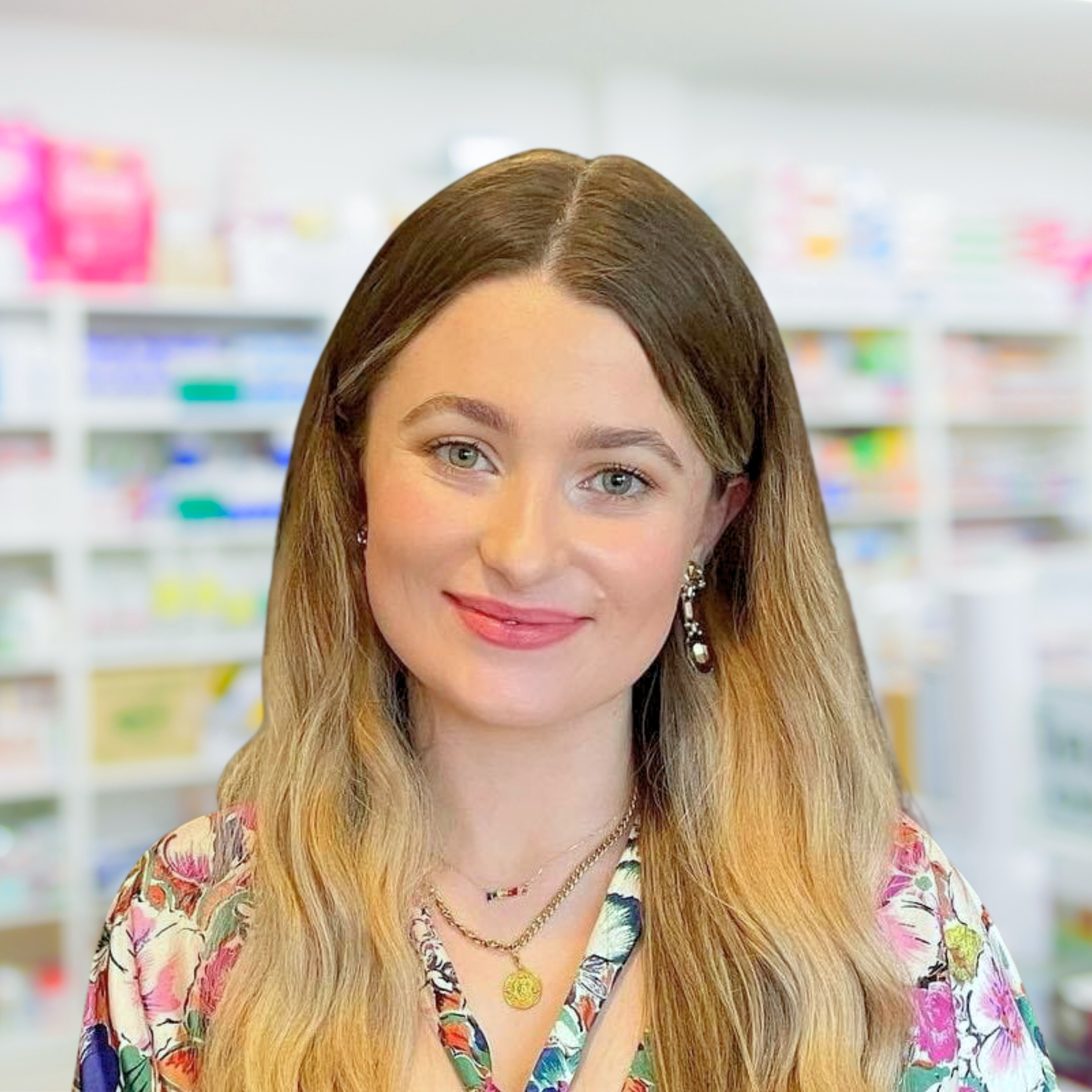Everything you need to know about depression

Depression is more than just feeling blue. It's like a heavy cloud that sticks around, making everything seem dull and uninteresting. In fact, it’s one of the most common mental health conditions, affecting around 1 in 6 adults here in the UK.
Imagine losing interest in things you used to love, feeling exhausted even after a good night's sleep or having thoughts that make you doubt yourself.
Your mind might feel like a tangled mess, and even simple decisions become a struggle. Sometimes, your body might ache without any real reason. Depression isn't just in your head; it can show up physically, too.
In this guide we’ll talk you through the different types of depression, diagnosing depression, treatment options and tips on how to cope.
If you’re thinking about suicide or self-harm, it’s important to talk to someone right away. Help is always available and you’re not alone - visit the NHS website to find the right service for you.
Types of depression
There isn’t a one-size-fits-all approach to depression. There are multiple types, and understanding them can shed light on the diverse ways it can affect people.
Clinical depression (major depressive disorder)
This is what most people commonly think of as depression. Clinical depression, sometimes known as major depressive disorder (MDD), involves persistent feelings of sadness, hopelessness, guilt or worthlessness.
Physical symptoms like changes in appetite, insomnia, lack of energy, poor concentration and agitation might also be present.
Psychotic depression
Occasionally, depression can lead to a disconnection from reality or encounters with psychosis. Signs of psychotic depression include: hallucinations, delusions and feelings of paranoia.
You might see or hear things that aren’t there (hallucinations); you might believe that you’re bad or being watched or followed (delusions); or you may feel like everyone is against you, or that others have caused bad things to happen (paranoia).
Manic depression (bipolar disorder)
Manic depression, also known as bipolar disorder, is characterised by extreme mood swings. People with bipolar disorder experience periods of intense and elevated moods known as ‘mania’ that are contrasted by episodes of deep sadness or depression.
These mood shifts are more severe than the typical ups and downs that everyone experiences.
During manic episodes, individuals might feel unusually energetic, excited, and even euphoric. They might talk rapidly, have racing thoughts, engage in risky behaviour and have difficulty sleeping.
On the other hand, depressive episodes bring overwhelming feelings of sadness, worthlessness and loss of interest in things they once enjoyed.
Seasonal affective disorder (SAD)
Seasonal affective disorder (SAD) is a type of depression that occurs at a specific time of year, usually during the autumn and winter months when there is less natural sunlight.
People with seasonal depression often experience symptoms similar to those of major depressive disorder, including low mood, lack of energy, difficulty concentrating, changes in sleep patterns and a loss of interest in activities they once enjoyed.
However, once spring and summer arrive, these symptoms tend to subside.

Postnatal depression
Postnatal depression, also called postpartum depression, is a type of sadness that some people feel after having a baby. It's more serious than just feeling a little down and can happen to both new mums and dads.
This sadness can make it hard to take care of the baby and enjoy things. Symptoms include feeling really sad, tired and guilty, as well as having trouble sleeping and eating. Sometimes, people might even have scary thoughts about hurting themselves or the baby.
Prenatal depression
Prenatal depression, also known as antenatal depression, is when a pregnant person feels extremely sad, hopeless or not interested in things they used to enjoy.
This can happen because of a mix of hormonal changes from pregnancy and emotional stress. Symptoms include feeling tired, not sleeping well and losing interest in activities.
Premenstrual dysphoric disorder (PMDD)
Premenstrual dysphoric disorder (PMDD) is a more severe form of premenstrual syndrome (PMS). It happens to some people before their period starts and brings strong emotional and physical symptoms.
These symptoms, like mood swings, sadness, tiredness and body discomfort, are more intense than regular PMS. PMDD can affect daily life a lot, making things like work and relationships harder. It's caused by changes in hormones and serotonin levels.
What’s the difference between sadness and depression?
Sadness is a normal feeling we have when something bad happens, like failing a test or your favourite sports team losing a game. It comes and goes and will typically get easier over time.
Depression, though, is a more serious condition. It's like a prolonged and stronger form of sadness that sticks around for a long time, even when things are okay.
Depression can make it really difficult to do normal things, and it might not have a clear reason for happening. It comes with changes in how we sleep, eat and feel physically.
Diagnosing depression
Diagnosing depression involves talking to a healthcare professional, like your GP or therapist. They will ask questions about how you're feeling, your thoughts and your daily life.
They will look for specific signs, like feeling sad most of the time, losing interest in things you used to enjoy, changes in sleep and eating patterns, and difficulty concentrating. They might also ask about physical symptoms like tiredness or body aches.
They'll want to know how long these feelings have been going on, usually for at least two weeks in order to diagnose depression.

Treatment
Depression treatments typically involve a combination of self-help resources, talking therapies and medication.
Self-help
To help with depression, you can try several things on your own. Regular exercise can boost your mood, and eating well-balanced meals helps, too.
Make sure you're getting enough sleep and try techniques like mindfulness and meditation to calm your mind. Stay connected with friends and family, and break tasks into smaller steps to make them more manageable.
Doing things you enjoy, like hobbies, can be helpful. Writing in a journal can let you express your feelings, and routines provide structure. Be kind to yourself by changing negative thoughts into positive ones, and find ways to cope with stress.
Talking therapies
The NHS offers free access for talking therapies. You can either self-refer directly to an NHS talking therapies service, or if you prefer, your GP can make a referral for you.
These services are available in various formats, including face-to-face sessions, video consultations, telephone support or even online courses.
Cognitive behavioural therapy (CBT)
In cognitive behavioural therapy (CBT), you work with a therapist to identify and change negative thought patterns and behaviours that contribute to your depression.
The main idea is that how you think affects how you feel and behave. With CBT, you learn to recognise these negative thought patterns and replace them with more balanced and realistic thoughts.
This can help improve your mood and the way you approach challenges. CBT also involves setting and working towards achievable goals, developing coping strategies and learning problem-solving skills.
It's often done through individual or group therapy sessions with a trained therapist.
Interpersonal therapy (IPT)
Interpersonal therapy (IPT) is another effective approach for treating depression. IPT focuses on the relationships and social interactions in your life and how they impact your mood.
It works by improving your relationships and communication that can lead to a reduction in depressive symptoms. During IPT, you work with a therapist to address specific interpersonal issues that might be contributing to your depression, such as unresolved conflicts, grief, role transitions or social isolation.
It aims to help you develop better communication skills, set healthy boundaries and enhance your support network.
Behavioural activation
Behavioural activation is a way to treat depression by doing things that make you feel good. When you're depressed, you might stop doing things you used to enjoy.
With behavioural activation, a therapist helps you pick activities that can make you feel better, even if you don't feel like doing them at first. By doing these activities, your mood can improve over time.
It's about breaking the cycle of feeling stuck and bringing back positive experiences.
Individual problem-solving
Individual problem-solving for depression is about working with a therapist to solve specific problems causing distress in your life. You start by identifying these problems, setting clear goals, brainstorming solutions and evaluating them.
Then, you create a plan for implementing the chosen solution and regularly reviewing your progress.
Psychodynamic psychotherapy
Psychodynamic psychotherapy for depression is a type of talk therapy that explores the underlying emotions, thoughts and experiences that might be contributing to your depression.
Unlike some other therapies that focus on specific problems or behaviours, psychodynamic therapy delves deeper into your past and present experiences to help you understand how they shape your feelings and actions.
The goal is to uncover and work through unresolved conflicts, unconscious feelings and patterns of behaviour that could be linked to your depression. This process typically involves regular sessions with a trained therapist who encourages self-reflection and insight.
While it may take longer than some other therapies, psychodynamic therapy aims to create lasting changes in how you relate to yourself and others.
Counselling
Counselling is a type of talk therapy where you meet with a trained counsellor to discuss your feelings, thoughts and experiences related to depression.
Your counsellor listens without judgement and provides support to help you better understand your emotions and challenges. Together, you work on developing coping strategies, setting goals and improving your overall mental wellbeing.
Unlike some therapies that explore deep-rooted issues, counselling often focuses on practical solutions and strategies for managing the symptoms of depression. It's a safe space to talk about your concerns and find ways to feel better, typically through regular one-on-one sessions.
Behavioural couples therapy
Behavioural couples therapy (BCT) is a type of therapy designed for couples where one or both partners are dealing with depression. In BCT, couples work together to improve their relationship and support each other in managing depression.
They learn better communication, problem-solving and conflict resolution skills. BCT also encourages couples to engage in enjoyable activities together and reduce negative interactions that might worsen depressive symptoms or relationship problems.

Antidepressants
Antidepressants are medications used to help with depression symptoms, and there's a wide variety available. While many individuals with moderate to severe depression benefit from them, not everyone responds in the same way.
You might react positively to one antidepressant but not another, meaning you may need to try multiple medications to find the right fit.
Although antidepressants aren’t addictive, you might experience withdrawal symptoms if you miss a dose or you suddenly stop taking them. Always speak to your prescriber before stopping antidepressants.
When you’re offered antidepressants, your GP or specialist nurse should check in with you every week for 2-4 weeks to assess how effective they are. In most cases, symptoms begin to improve after 4 weeks of starting treatment.
Contact your GP straight away if you have any feelings of hopelessness or suicidal thoughts that start or get worse after starting antidepressants.
Selective serotonin reuptake inhibitors (SSRIs)
SSRIs, which stands for selective serotonin reuptake inhibitors, are the most commonly prescribed antidepressant medication. They tend to be the preferred choice because they typically result in fewer side effects and are less likely to cause serious complications in case of an overdose.
Among SSRIs, Fluoxetine, often recognized by the brand name Prozac, is one of the most well-known. Other examples of SSRIs include Citalopram (marketed as Cipramil), Escitalopram (sold as Cipralex), Paroxetine (branded as Seroxat), and Sertraline (known as Lustral).
Serotonin-noradrenaline reuptake inhibitors (SNRIs)
SNRIs, or serotonin-norepinephrine reuptake inhibitors, share similarities with SSRIs. They were developed with the intention of being a more potent type of antidepressant compared to SSRIs.
Nonetheless, the evidence regarding whether SNRIs are superior in treating depression remains uncertain. It appears that individuals may have varying responses, with some benefiting more from SSRIs and others from SNRIs.
SNRIs medications include: Duloxetine, known as Cymbalta and Yentreve, and Venlafaxine, marketed as Efexor.
Noradrenaline and specific serotonergic antidepressants (NASSAs)
NASSAs, or noradrenaline and specific serotonergic antidepressants, could prove effective for individuals who cannot take SSRIs.
While NASSAs share side effects similar to SSRIs, they are believed to be linked to fewer sexual problems. Nevertheless, they might initially lead to increased drowsiness.
In the UK, the primary NASSA prescribed is Mirtazapine, known under the brand name Zispin.
Tricyclic antidepressants (TCAs)
TCAs, or tricyclic antidepressants, belong to an older class of antidepressant medications. They’re typically not the first choice for treating depression today because they can pose more significant risks in case of overdose, and often come with more uncomfortable side effects compared to SSRIs and SNRIs.
However, there are exceptions, and TCAs may still be considered for individuals with severe depression that’s unresponsive to other treatments. Additionally, they might be recommended for managing other mental health conditions like OCD and bipolar disorder.
Examples of TCAs are: Amitriptyline, Clomipramine, Dosulepin, Imipramine, Lofepramine and Nortriptyline. Some TCAs, like Amitriptyline, can also be used to alleviate chronic nerve pain.
Serotonin antagonists and reuptake inhibitors (SARIs)
SARIs, which stands for serotonin antagonist and reuptake inhibitors, are typically not the first choice. However, they might be recommended if other antidepressants have proven ineffective or have resulted in side effects.
In the UK, the primary SARI prescribed is Trazodone, known by the brand name Molipaxin.
Monoamine oxidase inhibitors (MAOIs)
MAOIs, or monoamine oxidase inhibitors, belong to an older class of antidepressants and are rarely prescribed in recent times. Due to the potential for serious side effects, their use should be limited to specialist medical practitioners.
MAOI examples include: Tranylcypromine, Phenelzine and Isocarboxazid.
tDCS treatment
tDCS is a non-invasive treatment for depression that involves applying a mild electrical current to certain parts of the scalp. It aims to improve mood regulation in the brain, with some studies suggesting it can reduce depressive symptoms with minimal discomfort.
Introducing the Flow Neuroscience Headset, a portable wireless device that aims to treat depression. It brings the effectiveness of in-clinic techniques to the comfort of your own home.
Using a non-invasive brain stimulation method, it provides a 30-minute session that easily fits into your daily routine. Clinically proven to alleviate depression symptoms, 57% of users achieved depression-free status after using the headset for 10 weeks in a clinical trial.
Additionally, 77% of users reported seeing improvements within just 3 weeks. With compatibility for both iOS and Android devices, the Flow tDCS Portable Wireless Headset offers a safe and effective treatment option with no side effects.
Suicide prevention
If you or someone you know is feeling like they want to die, it's crucial to seek help immediately. You don't have to go through this alone; there is support available.
Free helplines are available to provide assistance when you’re feeling very low and desperate. Unless specified, they operate around the clock, every day. You can also reach out to these helplines for guidance if you have concerns about someone else.
You can find the list of free helplines on the NHS website, here. They include both texting and phone call support.
It’s also a good idea to share your thoughts and feelings with family or friends; they may provide valuable support and help to keep you safe.
Remember, there's no specific right or wrong way to discuss suicidal feelings. The key is initiating the conversation. If you find it challenging to confide in someone you know, you have alternative options:
- Reach out to your GP and request an emergency appointment.
- Call 111 during non-office hours, and they can assist you in finding the necessary support.
- Contact your mental health crisis team if you have one in place.
If you have inflicted severe harm upon yourself, such as overdosing on medication, or if you believe you are on the verge of causing harm to yourself, please dial 999 immediately for an ambulance or go directly to the nearest A&E.
Alternatively, request someone else to contact 999 or accompany you to A&E.
Tips for managing suicidal feelings
When coping with suicidal feelings, it's crucial to focus on the present rather than worrying about the future. Try to get through one day at a time, taking small steps toward healing.
Steer clear of drugs and alcohol, as they can worsen emotional distress. Seek out a safe environment where you can find solace, perhaps at a friend's house, and be around those who care about your wellbeing.

If you’re feeling blue, we hope you now know what to do!
It’s important to understand that there isn’t just one type of depression, and it’s a whole lot more than just feeling sad now and again.
Whether you’re wondering whether you could have depression or you’ve been diagnosed and are looking for the right treatment option for you, we hope this guide has provided some valuable insights.
If you’d like to learn more about depression, you can visit the NHS or Mind website. Need help now? Don’t be afraid to reach out, either from one of the free 24/7 helplines or talk to someone you trust. You never have to deal with depression alone.





